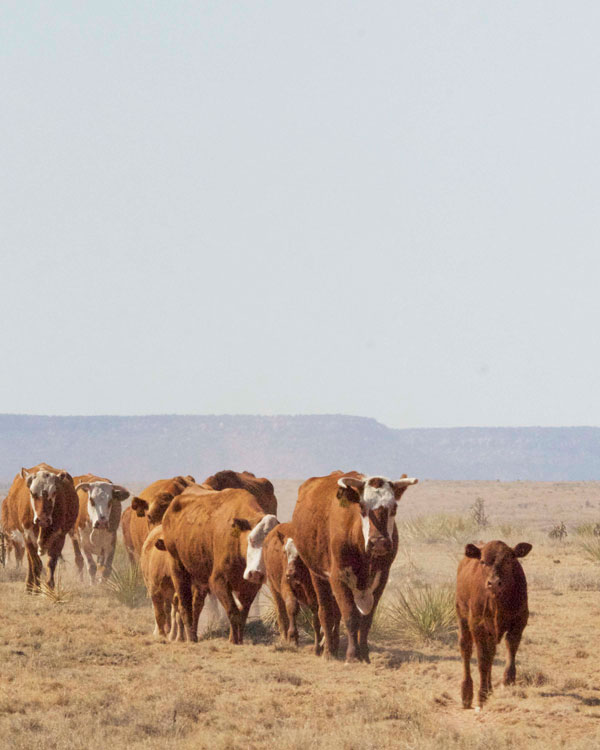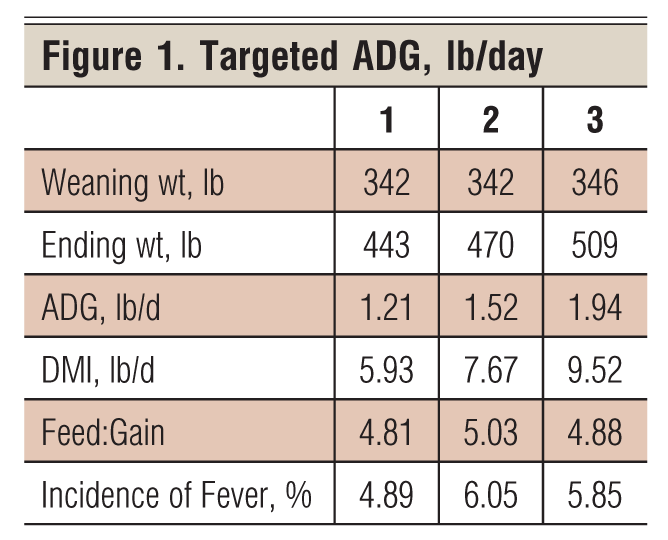When drought dries the grass and cow body condition falls off, consider early weaning.
July 6, 2018

By Justin Waggoner and AJ Tarpoff
For much of cattle country, especially the Great Plains and Southwest, drought has become the norm. It’s the wet years that are the exception. And in an extended drought, early weaning can be a helpful production practice.
But while early weaning is a consideration, it takes a careful analysis to make sure it’s right for you. Here are some things to keep in mind.
Under normal production circumstances, calves are typically weaned at 180-220 days of age. However, under circumstances where forage supply is limited or cow body condition is lacking, weaning calves at 180 days of age or less may be one of the easiest ways to reduce cow nutrient requirements and improve cow body condition.
Many cattle producers express concerns over the thought of weaning 350-450 pound calves during the heat of the summer and believe that early-weaned calves will not perform well in a drylot environment. In a recent study conducted at the K-State Agriculture Research Center-Hays, 243 spring-born calves were weaned at 113 ± 17 days of age and were limit-fed a common diet to achieve target average daily gains (ADG) of 1.0, 2.0, or 3.0 pounds per day during an 84-day receiving period.
The results of this study are summarized in Figure 1.

Although we were unable to achieve the target ADG of 3.0 pounds per day (which is a rather lofty goal), the calves in the 3.0 pounds per day treatment group gained 1.94 pounds per day, consumed 9.5 pounds of dry feed per day, exhibited a feed conversion of 4.88:1 (feed:gain) and weighed 509 pounds at the conclusion of study (197 days of age). Additionally, over 5% of the calves exhibited clinical signs of illness and were treated.
The results of this study demonstrate that early-weaned calves are capable of utilizing dry feeds, and have a tremendous capacity to convert feed resources into gain in a dry lot environment.
One of the keys to successfully managing newly-weaned calves (early or conventionally weaned) and achieving acceptable levels of feeding performance (~ 2.0 lb/d ADG) is getting calves to consume dry feed.
What about calf health?
The most successful early wean programs begin with a healthy calf prior to weaning. Calf age plays a crucial role on when to early wean. Animal health procedures conducted prior to weaning will help ensure calf health through the transition of weaning.
In a recent nationwide survey of practicing veterinarians, the largest number of respondents (38%) recommended the earliest age to wean calves is 90-120 days of age. Consulting with your local veterinarian to help establish a health protocol to help boost calf health while reducing stress will be extremely beneficial in an early wean situation.
Understanding the calf’s immune function during this time is also important. Calves are born with a fully functional immune system, but they have yet to mount a response to any pathogen. The intake of colostrum shortly after birth helps fill the gap and provide passive immunity of immune cells and antibodies that act as the natural immune function early in life.
Until 2 to 4 months of age, maternal antibodies are the key players in the calf’s immune protection. This plays a role in how the young calves will respond to immune challenges such as vaccines. When these maternal antibodies start to decrease, it is a prime time to initiate a vaccine protocol to help boost the active immune protection of the calf.
While every calf may not fully respond to vaccines at this age, vaccination primes the immune system for a booster later in life. Vaccines to consider would be a multi-strained respiratory vaccine (modified-live), and a clostridial (7-way or more).
Multiple stressors and decreased health go hand in hand. Painful procedures such as castration, dehorning, and branding should be conducted well before the day of weaning. Handling calves prior to weaning is important and gives opportunity to include many “preconditioning” type practices to help ensure calf health.
Initial vaccination and management procedures such as castration should be conducted 2-3 weeks prior to weaning. During this period of time, control of other stressors such as external parasites and internal parasite can be initiated. External parasites of concern are mostly flies during the summer months. Internal parasite control should target gastrointestinal nematodes (worms) as well as coccidiosis during this stressful time.
To further increase calf comfort, developing a plan to control heat stress and minimize dust can be very helpful in ensuring overall health, performance, and welfare of these calves.
Waggoner is an Extension beef systems specialist and Tarpoff is Extension veterinarian with Kansas State University
You May Also Like



